The popularity of cannabis-infused edibles has soared recently, attracting both longtime stoners and those new to the world of weed. After all, edibles provide a discreet, convenient, and often stronger alternative to smoking or vaping.
Now, homemade edibles have been around for decades — if not centuries. So, if you’re curious about how to make edibles at home, then you’re in the right place!
This guide will help you learn how to make your own edibles, from decarboxylation basics to proper storage and consumption. We’ll cover the importance of dosage control, the variety of edibles you can make at home, and offer tips and recipes to get started.
Whether you’re interested in the health benefits of weed edibles or just want to try adding it to your cooking, this DIY edibles guide is for you. Let’s begin!
Understanding Cannabis for Edibles
Cannabis edibles come from different types of cannabis, each giving a unique experience.
Indica strains are known for their relaxing effects, making them great for nighttime use.
Sativa strains, on the other hand, are more energizing and are better suited for the day.
Hybrid strains mix both effects, making them flexible for making hemp edibles.
Also, strains high in CBD are preferred for their health benefits without strong psychoactive effects.
THC vs. CBD Edibles
The main cannabinoids used in edibles are THC (tetrahydrocannabinol) and CBD (cannabidiol).
THC edibles are known for their potent psychoactive effects, providing the “high” associated with cannabis. On the other hand, CBD edibles are sought after for their health benefits, such as pain relief, without the psychoactive effects.
It’s important to recognize that understanding the differences between THC and CBD edibles is crucial for achieving the desired effects and benefits.
The Importance of Decarboxylation
Before cannabis can be used in edibles, it must undergo decarboxylation, a process of heating cannabis to activate the THC, CBD, and other cannabinoids.
This step is essential because raw cannabis contains THCa and CBDa, the acidic forms of these cannabinoids, which have little to no psychoactive effects.
By decarboxylating cannabis before infusing it into edibles, you ensure the effectiveness of the end product.
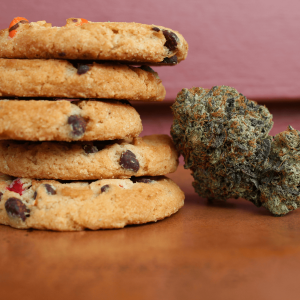
Step One: Preparing to Cook – Equipment and Ingredients Needed
Before you begin crafting your cannabis edibles, having your kitchen properly set up and understanding the equipment and ingredients required is crucial for a smooth and successful cooking experience.
Equipment Needed
When making cannabis edibles, certain kitchen tools are essential for the process. Here’s a list of what you’ll need:
- Digital Scale: Precision is key when dealing with cannabis, so a digital scale is essential for measuring accurate dosages.
- Grinder: A grinder is needed to finely grind the cannabis flower before decarboxylation and infusion.
- Oven: For decarboxylating your cannabis, ensuring the THC is activated.
- Stovetop, Slow Cooker, or Double Boiler: Essential for the infusion process, whether you’re making cannabutter, cannabis oil, or another base.
- Fine Mesh Strainer or Cheesecloth: To strain the plant material from your butter or oil.
- Storage Containers: Airtight containers are needed for storing your cannabis-infused ingredients.
- Cooking Utensils: Spoons, spatulas, and mixing bowls will be used throughout the cooking process.
Ingredients Needed
The ingredients for your homemade cannabis edibles will vary based on the recipe you choose, but here are the basics you’ll need for the infusion process:
- Cannabis: The key ingredient for your edibles, make sure you have enough based on the potency and quantity of edibles you aim to make.
- Fat Source: Whether you’re using butter, oil, or another fat, this will be your medium for THC infusion.
- Herbs and Spices: These can help mask the taste of cannabis and add delicious flavors to your edibles.
Setting Up Your Kitchen
- Clean Workspace: Ensure your kitchen is clean and organized. Having a clutter-free workspace will help streamline your cooking process.
- Preparation Area: Designate a specific area for preparing your cannabis, including grinding and measuring.
- Cooking Zone: Set up a dedicated spot for the decarboxylation and infusion processes, away from your preparation area to avoid cross-contamination.
- Cooling and Storage Area: Have a cool, dark space ready for cooling and storing your infused ingredients or finished edibles.
Preparing your kitchen with the right tools and ingredients, along with setting up designated areas for each step of the cooking process, ensures a safer, more efficient, and enjoyable experience in making cannabis edibles.
Remember, the key to successful edibles lies not just in the potency and flavor but also in the care and attention to detail during the preparation and cooking phases.
Step Two: Decarboxylation
Decarboxylation is a crucial process in making your own edibles, transforming the non-psychoactive THCa and CBDa in raw cannabis into the potent THC and CBD.
This chemical change occurs through the application of heat, making the cannabinoids readily available for your body to use. Without this step, your edibles would lack the desired effects, regardless of how much cannabis you incorporate.
What You’ll Need
- Cannabis (flower or trim)
- Baking sheet
- Parchment paper
- Grinder (optional)
- Oven
Step-by-Step Guide to Decarboxylating Your Cannabis
Preheat Your Oven
Set your oven to 245°F (118°C). It’s important to maintain a lower temperature to avoid vaporizing the cannabinoids and terpenes.
Prep Your Cannabis
Grind your cannabis coarsely with a hand grinder or break it down lightly with your hands. This increases the surface area, ensuring an even decarboxylation.
Spread Cannabis on a Baking Sheet
Line your baking sheet with parchment paper to prevent sticking. Spread your ground cannabis evenly across the sheet.
Bake
Place the baking sheet in the oven and bake for 30-40 minutes for THC-rich cannabis or 60-90 minutes for CBD-rich strains. This slow-and-low approach ensures thorough decarboxylation without degrading the active compounds.
Cool Down
Remove the baking sheet from the oven and allow your cannabis to cool. It should be dry and crumbly to the touch.
Tips for Getting the Best Results
- Avoid Overcrowding: Ensure your cannabis is spread in a thin, even layer to promote uniform heat distribution.
- Monitor Temperature Closely: Use an oven thermometer to verify your oven’s temperature, as internal temperatures can vary.
- Stir Halfway Through: Gently mix your cannabis halfway through the baking time to decarboxylate evenly.
- Store Appropriately: If not using immediately, store your decarboxylated cannabis in an airtight container in a cool, dark place to preserve its potency.
Step Three: Choosing Your Base Ingredient
When making homemade edibles, choosing the right base ingredient is key. It influences the potency, taste, and how easily your body can digest it.
Since cannabinoids like THC and CBD dissolve in fat, butter and oil are common choices for cannabis infusions. But the best base really depends on what you prefer, any dietary needs, and the recipe you’re making.
Butter vs. Oil: Which Is Best for Your Marijuana Edibles?
Butter is a classic choice for making edibles due to its rich flavor and the creamy texture it lends to dishes. Cannabis-infused butter, or cannabutter, is ideal for baking and can be easily integrated into any recipe that calls for butter.
On the other hand, oil, such as coconut or olive oil, offers a healthier fat option and can be used in a wider range of recipes, including vegan and gluten-free options. Oils can also withstand higher temperatures than butter, making them more versatile for cooking (compared to baking).
How to Make Cannabis-Infused Butter
To make cannabutter, you’ll need:
- Decarboxylated cannabis
- Unsalted butter
- Water
- A stovetop pot and a strainer
- Melt the Butter: Begin by melting your butter over low heat in a medium pot, adding an equal part of water to prevent the butter from burning.
- Add Cannabis: Once the butter has melted, add your decarboxylated cannabis to the pot and stir gently.
- Simmer: Allow the mixture to simmer on low heat for 2 to 3 hours, stirring occasionally. Avoid boiling to prevent evaporating the THC.
- Strain: After simmering, strain the mixture using a fine mesh or cheesecloth to remove the plant material, squeezing out as much butter as possible.
- Cool and Store: Allow the cannabutter to cool, then refrigerate until solid. Water and impurities will separate to the bottom, leaving pure cannabutter on top.
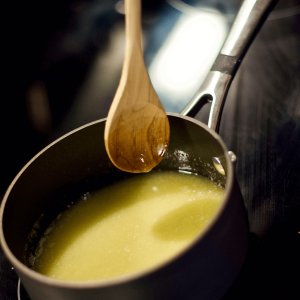
How to Make Cannabis-Infused Oil
Cannabis-infused oil follows a similar process to cannabutter. You’ll need:
- Decarboxylated cannabis
- High-quality oil (coconut or olive oil preferred)
- A slow cooker or saucepan
- Mix Ingredients: Combine your oil and decarboxylated cannabis in your cooking appliance of choice.
- Cook Slowly: Cook the mixture on low for several hours (at least 3, but up to 8) to ensure full infusion. If using a stovetop, a very low simmer is key.
- Strain and Store: Strain the oil through a fine mesh or cheesecloth. Then, store your cannabis-infused oil in an airtight container in a cool, dark place.
Alternative Bases (Alcohol, Milk, etc.)
Besides butter and oil, other fats like alcohol and milk can be infused with cannabis. However, these require more specific conditions for effective infusion.
Alcohol can be used to create cannabis tinctures, which are potent and shelf-stable, but should be prepared with food-grade alcohol only. Milk, cream, and other dairy products can also be infused with cannabis for recipes that benefit from a creamy base, but these must be consumed more quickly and stored in the refrigerator.
Remember, the key to successful cannabis edibles is not just in the potency but in the flavor and quality of the ingredients. Exploring different bases for your infusions can lead to a variety of delicious and effective edibles.
Step Four: Calculating Dosages
When whipping up your own cannabis edibles, it’s crucial to understand how to calculate the dosages to ensure a safe and enjoyable experience. After all, nobody wants a bad high.
Knowing the THC content of your cannabis and how it translates into the finished product can help manage potency and avoid overconsumption.
Understanding THC Percentages
The potency of your edibles depends largely on the THC percentage in the cannabis you start with.
Cannabis strains vary greatly, with THC levels typically ranging from 10% to 30%. This percentage indicates how much of the cannabis’s weight comprises THC. For instance, if you have one gram (1000 mg) of cannabis with a THC content of 15%, it contains 150 mg of THC.
How to Calculate the Strength of Your Edibles
To calculate the strength of your edibles, you’ll first need to know the total amount of THC in your decarboxylated cannabis.
Using the above example with 150 mg of THC, if you infuse this into a batch of butter or oil, the entire batch will contain that amount of THC.
If you then use your entire batch of infused butter to make a batch of 10 cookies, each cookie will contain 15 mg of THC (assuming the THC is distributed evenly).
Tips for Dosage Control
- Start Low and Go Slow: Especially if you’re new to cannabis or making a new batch, start with a lower dose and give it time to take effect.
- Even Distribution: Mix your infused butter or oil thoroughly with your recipe’s other ingredients to ensure even distribution of THC.
- Know Your Limits: Everyone’s tolerance varies, so what’s mild for one person may be strong for another. Adjust dosages according to your personal tolerance level.
- Label Clearly: Always label your edibles with their THC content per serving to avoid any mix-ups or accidental consumption.
- Stay Patient: Edibles take longer to kick in than smoking or vaping. Wait at least two hours before deciding to consume more.
Calculating dosages accurately is key in making edibles both enjoyable and safe. By understanding the THC percentages and applying careful math to your recipes, you can ensure consistent potency and avoid the common pitfalls of overconsumption.
Step Five: Simple Edibles Recipes to Get Started
Diving into cannabis edibles can be easy and straightforward. Begin with these simple, fail-safe recipes ideal for newcomers.
Cannabis-Infused Brownies
The classic cannabis edible, pot brownies offer a delicious, chocolaty way to enjoy your cannabutter or oil. Simply follow your favorite brownie recipe, substituting cannabutter for regular butter or cannabis-infused oil for vegetable oil.
Remember to calculate your dosages carefully to ensure each brownie square offers a pleasant experience.
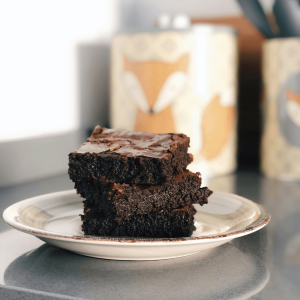
THC-Infused Gummies
THC-infused gummies are a fun and convenient way to consume cannabis, especially on the go.
Using fruit juice, gelatin, and your cannabis tincture, you can create these tasty treats in a variety of shapes and flavors. They’re also easy to dose, making them a favorite for both newbies and experienced users.
CBD Energy Bites
For a non-psychoactive option, CBD energy bites are perfect. Combine oats, nut butter, hemp seeds, CBD oil, and your choice of sweeteners like honey or maple syrup.
These no-bake bites are not only a great source of energy but also provide the calming benefits of CBD.
Advanced Cannabis Culinary Techniques
For those who are more experienced with cannabis cooking and looking to elevate their culinary game, these advanced techniques can add sophistication and depth to your dishes.
Infusing Cannabis into Sophisticated Dishes
Incorporating cannabis into gourmet recipes requires a delicate balance to ensure the flavor complements rather than overwhelms. Using cannabis-infused oils with lighter flavors like olive or avocado oil can subtly integrate cannabis into dishes without the heavy cannabis taste.
Tips for Masking the Taste of Cannabis
While some appreciate the herbaceous quality of cannabis, others may find it overpowering. To mask the taste, consider using strong flavors like chocolate, mint, or citrus. These can help to balance the flavor profile.
Additionally, lecithin can be used in your infusions to improve taste and potency.
Pairing Cannabis Strains with Food Flavors
Just like wine pairing, matching cannabis strains with complementary food flavors can enhance the dining experience. For example, indica strains with berry notes can pair beautifully with desserts, while sativa strains with citrus undertones might complement a light, summer salad. Understanding the flavor profile of your cannabis allows for creative and enjoyable pairings.
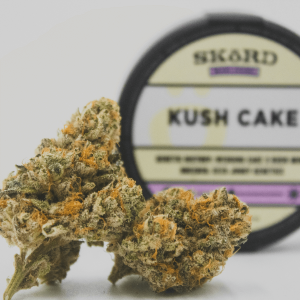
Baking with Cannabis
Baking with cannabis butter or oil presents a potent way to enjoy the benefits of cannabis, seamlessly integrating it into delicious baked goods.
The key to successful cannabis baking lies in the even distribution of your cannabis-infused fat throughout the mixture, ensuring each bite contains a consistent dose of THC. To achieve this, thoroughly mix your canna-butter or oil with the other recipe ingredients until the texture is uniform.
A good starter recipe is for cannabis-infused cookies. Begin by creaming together your cannabis butter with sugar, then gradually mix in your dry ingredients to form a dough. Bake at 350°F (176°C) for 10-12 minutes or until golden brown.
Remember, the potency of your cookies will depend on the strength of your canna-butter, so dosing carefully is crucial to enjoying your homemade treats responsibly.
Making Vegan and Gluten-Free Edibles
Catering to the dietary needs and preferences of all stoners means including vegan and gluten-free options in your repertoire of edibles.
Understanding the substitutes for common allergens in edibles allows you to create inclusive and delicious treats that everyone can enjoy.
Substitutes for Common Allergens in Edibles
When making edibles that are vegan and gluten-free, several common ingredients need substitution. For dairy products, options like coconut oil or vegan butter can replace traditional butter in recipes to maintain richness and flavor.
Instead of wheat flour, gluten-free flours such as almond, coconut, or rice flour can be used as the base for baked goods, ensuring they are safe for those with gluten sensitivities.
Recipe for Gluten-Free Cannabis-Infused Banana Bread
This gluten-free cannabis-infused banana bread is a moist, flavorful treat that’s easy to make and hard to resist.
Ingredients:
- 1/2 cup cannabis-infused coconut oil
- 3/4 cup maple syrup or honey
- 4 ripe bananas, mashed
- 2 eggs
- 1 teaspoon vanilla extract
- 1 teaspoon baking soda
- 1/2 teaspoon salt
- 1/2 teaspoon cinnamon
- 2 cups gluten-free flour blend
- 1/2 cup chopped walnuts or pecans (optional)
Instructions:
- Preheat your oven to 350°F (175°C) and grease a 9×5 inch loaf pan.
- In a large bowl, mix the cannabis-infused coconut oil and maple syrup. Add the mashed bananas and eggs, mixing until combined. Stir in the vanilla.
- Add the baking soda, salt, and cinnamon, blending thoroughly. Gradually incorporate the gluten-free flour until the mixture is smooth. Fold in nuts if desired.
- Pour the batter into the prepared loaf pan and bake for 50-60 minutes, or until a toothpick inserted into the center comes out clean.
- Allow to cool before slicing. This banana bread can be served as is, or with a spread of vegan butter.
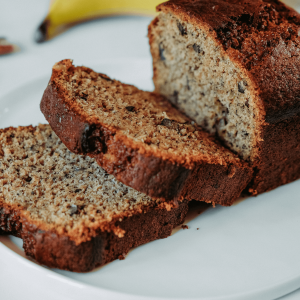
Recipe for Vegan Cannabis Gummies
Vegan cannabis gummies are a delightful, easy-to-dose option for those looking for animal product-free edibles.
Ingredients:
- 3/4 cup fruit juice (your choice, preferably clear)
- 2 tablespoons agar-agar powder (a vegan gelatin alternative)
- 1/4 cup cannabis tincture
- 2 tablespoons maple syrup or agave nectar
- 1/2 teaspoon lemon juice
Instructions:
- In a small saucepan, bring the fruit juice to a low simmer. Do not boil.
- Add the agar-agar powder and whisk until completely dissolved.
- Stir in the cannabis tincture, sweetener, and lemon juice, ensuring even distribution.
- Pour the mixture into silicone molds of your choice. A dropper can help to avoid spills.
- Allow the gummies to set in the fridge for at least 2 hours.
- Once firm, remove the gummies from the molds. Store in an airtight container in the refrigerator.
By incorporating these vegan and gluten-free recipes into your cannabis cooking, you can offer delicious, inclusive treats that cater to a wide range of dietary needs and preferences.
Storage and Shelf Life of Edibles
To keep your cannabis-infused edibles safe and long-lasting, it’s important to know how to store them and understand their shelf life.
Just like any other food, edibles can spoil over time, and the presence of cannabis doesn’t stop this from happening. For best storage, put edibles in an airtight container and keep them in a cool, dark place. This helps prevent the cannabinoids from breaking down and keeps the edibles fresh.
To extend the shelf life of perishable items such as baked goods or gummies, including those infused with cannabis, it is advisable to store them in the refrigerator. Typically, cannabis-infused products, like hemp gummies, will remain viable for as long as their non-infused counterparts. However, it is important to note that the potency of THC may diminish over time. Proper refrigeration helps maintain the freshness and effectiveness of these products, ensuring they deliver the best experience possible.
To check if an edible is still good to eat, look for common signs of spoilage like a bad smell, bad taste, or visible mold. If in doubt, throw it out to avoid the risk of getting sick.
Conclusion
In this blog, we’ve explored the versatile and creative world of making cannabis-infused edibles, covering everything from flavor pairings and baking techniques to crafting vegan and gluten-free options. We’ve learned that the key to successful edibles lies in understanding the potency of your cannabis, using appropriate substitutes for allergens, and ensuring proper storage to maintain freshness and efficacy.
Starting small and prioritizing safety cannot be emphasized enough. Whether you’re a novice or an experienced cook, beginning with low doses and understanding the effects of cannabis edibles is crucial to a positive experience. Remember, the effects of edibles can take longer to manifest compared to other forms of consumption, making it easy to overindulge if you’re not careful.
Making edibles blends cooking creativity with the benefits of cannabis. By using the provided guidelines and recipes, you can make homemade treats that taste great and meet various dietary needs and preferences. Enjoy your cooking and remember to consume responsibly!
Frequently Asked Questions
1. How are edibles usually made?
Edibles are made by infusing food items with cannabis. The most common method involves using cannabis-infused oils or butter, which can be easily mixed into virtually any recipe.
The process begins with decarboxylation, which activates the THC or CBD in cannabis through heat. Once activated, the cannabis is combined with a fat source (like butter or oil) to create an infusion. This infusion can then be used as a direct replacement for regular butter or oil in any cooking or baking recipe.
2. Is it hard to cook edibles?
Cooking with cannabis does require some basic knowledge and precision, but it is not inherently difficult. The key steps to success include correctly decarboxylating your cannabis to activate the THC or CBD and accurately dosing your edibles to ensure they have the desired potency.
Measuring ingredients and closely following your recipe can help maintain consistency and potency levels. With practice and attention to detail, anyone can master the art of making delicious and effective cannabis-infused edibles.

 Rewards
Rewards




